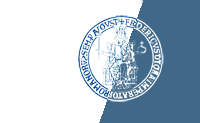Panico, Anna (2016) The role of nanopatterning in cell and nuclear mechanics. [Tesi di dottorato]
Anteprima |
Testo
Panico_Anna_28.pdf Download (2MB) | Anteprima |
| Tipologia del documento: | Tesi di dottorato |
|---|---|
| Lingua: | English |
| Titolo: | The role of nanopatterning in cell and nuclear mechanics |
| Autori: | Autore Email Panico, Anna anna.panico@unina.it |
| Data: | 30 Marzo 2016 |
| Numero di pagine: | 76 |
| Istituzione: | Università degli Studi di Napoli Federico II |
| Dipartimento: | Ingegneria Chimica, dei Materiali e della Produzione Industriale |
| Scuola di dottorato: | Ingegneria industriale |
| Dottorato: | Ingegneria dei materiali e delle strutture |
| Ciclo di dottorato: | 28 |
| Coordinatore del Corso di dottorato: | nome email Mensitieri, Giuseppe giuseppe.mensitieri@unina.it |
| Tutor: | nome email Netti, Paolo Antonio [non definito] |
| Data: | 30 Marzo 2016 |
| Numero di pagine: | 76 |
| Parole chiave: | Nanotopography; adhesion; cell mechanics |
| Settori scientifico-disciplinari del MIUR: | Area 09 - Ingegneria industriale e dell'informazione > ING-IND/34 - Bioingegneria industriale |
| Depositato il: | 12 Apr 2016 23:21 |
| Ultima modifica: | 04 Mag 2017 01:00 |
| URI: | http://www.fedoa.unina.it/id/eprint/10807 |
Abstract
Biophysical signals are known to influence cell fate and functions. In particular, topographic cues exert a direct control over focal adhesions positioning and cytoskeletal assemblies. Moreover, the nuclear envelope is directly connected to the cytoskeleton and actin generated stresses can directly impact on nuclear shape and gene matter configuration. However, how topographic patterns might influence the processes above or more generally, cellular and nuclear mechanics is still unclear. The goal of this work is to investigate how the microenvironmental conditions in terms of topographic cues, substrate chemistry and cell-cell contacts may alter the cell morphology, along with cellular and nuclear mechanics. In a first set of experiments we used nanopatterned polydimethylsiloxane (PDMS) as cell culturing substrates. The patterns consisted of parallel and straight channels having ridge to groove width ratio of 1:1. Pattern features used were 700nm or 350 nm wide with depth of 250nm or 100nm respectively. Additionally, the chemistry of the material surface was modified by performing different functionalization treatments, namely fibronectin or serum coating. Mesenchymal Stem Cells (hMSC) were cultured at low densities on the substrates up to 48h. Atomic Force Microscopy (AFM) was employed to generate elasticity maps of the whole cell body. We then correlated local elastic modulus with cell height in order to discriminate the different cellular regions. Our analysis showed structural and mechanical heterogeneity of the cell body, clearly mediated by topographic and adhesive signal. In particular, the spindle like phenotype observed on the nanopatterned materials generates compressive forces on the nucleus, which increase its mechanical properties. Our results also demonstrated a positive correlation between the expression of lamins A / C, the structural proteins of the nucleus, and the mechanical properties of the nuclear region. Therefore it is reasonable to hypothesize that these proteins have a primary role in dictating the mechanical properties of the nucleus. In a second setup, we used endothelial cells (HUVECs) on flat PDMS substrates to investigate the effect of cell-cell contacts on cytoskeletal assembly and nuclear mechanics. We found that actin is redistributed in the cortical area, freeing the nucleus, which exhibits a mechanical conformation characterized by lower moduli than single cells. Our results pave the way for capturing designing concept to fabricate novel patterned platforms that effectively alters nuclear mechanics and possibly cell fate by tuning the material-cytoskeleton-nucleus crosstalk.
Downloads
Downloads per month over past year
Actions (login required)
 |
Modifica documento |




